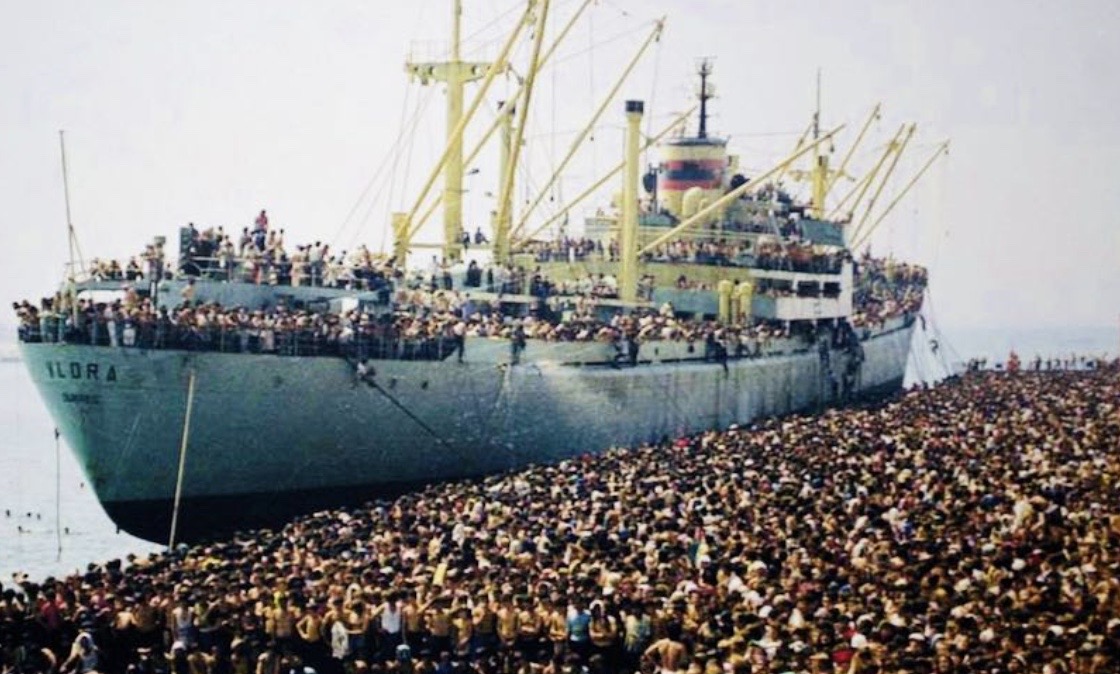(by Francesco Matera) Sub-Saharan migrations are closely linked to the crisis in Niger following the coup d'état of last July 26th. The Italian government is very concerned because a war in Niger could inflame the Sahel by increasing the flow of migrants in an unpredictable and uncontrolled way. Niger is important because it occupies a strategic position as regards migratory routes, as a privileged transit corridor towards Libya and projection platform - together with Tunisia - towards Italy.
In the first seven months of 2023, according to data published by the Ministry of the Interior, they arrived from the African route 64675 migrants, more than double compared to the same period of 2022 that it recorded 30562 Arrivals. The reaction of Italian Foreign Minister Antonio Tajani in La Stampa was eloquent: “The problem of the new wave of immigrants is already a reality”.
With each passing day, if a more structured agreement is not reached, the situation risks worsening and if a war were to break out in Niger, it will be a disaster where the stability of the Italian reception system will suffer the most.
Niger became fully part of the European Union's flow control strategy the day after the Valletta (Malta) summit in November 2015. Following the intervention of Brussels, the Niamey authorities implemented a series of measures aimed at to limit the access of migrants to the northern border with Libya. Since 2017 they have also stemmed the flow from Agadez which has become, over time, a crossroads for migrants preparing to cross the Sahara. To this end, the main architect of this containment plan, the then Minister of the Interior – a certain Mohamed Bazoum – decided to apply with the utmost severity a 2015 law that punishes the illicit trafficking of migrants.
Following these measures, as Le Monde writes, the citizens of Senegal, Côte d'Ivoire, Mali and Nigeria had to face a series of bureaucratic tasks to reach Agadez, most often in violation of the rules on free movement established by the Economic Community of West African States (ECOWAS).
The price of the new measures desired by the EU, then implemented by the Nigerien government, have in fact contrasted the traffic of border smugglers which constituted an important source of income for the entire north of Niger. The oasis of Agadez, through which in 2016 almost 333.000 migrants passed through bound for Algeria and Libya, had long thrived on a buoyant migration economy. The city of Agadez was the gateway to the Saharan desert, where convoys of 4×4s and trucks were harnessed for the Saharan odyssey. The city was teeming with “migration service” providers – criminalized overnight – who housed, fed, equipped and transported migrants.
In 2010, the birth of this activity linked to migration came at the right time to compensate for the collapse of tourism, following the Tuareg rebellions (1990-1997 and 2007-2009). The sudden crackdown on smuggling networks fueled local tensions and undermined the delicate political and ethnic balance that had allowed Niamey to appease the irredentist demands of the Tuaregs. Aware of the danger, the government has entrusted to Mahamadou Abou Tarka, president of the Higher Peacebuilding Authority, is tasked with overseeing the retraining of former smugglers – now called “migration actors” – thanks to EU funding. A mission full of pitfalls and frustrations, because the new jobs were not easy to find and were not very profitable compared to the compensation deriving from the smuggling of migrants.
Hence the resilience of trafficking networks, which are still active even if more discreet. “The flow of migrants has decreased, but the networks are bypassing Agadez“, says Amadou Moussa Zaki, magistrate and former prosecutor of Agadez to Le Monde. The new routes avoid the overly controlled main roads leading to the border posts of Toummo (in Libya) and Assamakka (on the Algerian border), 1150 and 418 kilometers respectively from Agadez, and instead use secondary Saharan roads, impossible to monitor.
This redistribution of routes explains why the number of migrants reaching Algeria and Libya from Niger has started to rise again: 8.800 in February 2023, according to the International Organization for Migration (IOM), compared to a monthly average of 5.400 in 2017. Of course, we are still far from the peak of 2.700 monthly crossings in 2016, but the rebound is there, testifying to the fragility of the gains obtained thanks to pressure from the EU.
According to the IOM, 2014 people traveling through the Sahara desert have died or disappeared since 5.600. The insecurity to which migrants are subjected has taken on a new dimension with the expulsion policy pursued by the Algiers authorities. According to the Alarme Phone Sahara network, 2.000 migrants have been sent back to Niger since the beginning of the year
While the prospect of a military operation in Niger to bring the country back to the helm of the elected president Mohamed Bazoum seems to be giving way to a resumption of negotiations, the military in power in Niamey had a meeting on Monday with the American envoy Victoria Nuland. The talks were "quite difficult at times," said the diplomat, who was unable to meet either the head of the junta or the overthrown president. “Diplomacy is the best way to resolve the situation“, the US Secretary of State insisted on Monday Antony blinken. A meeting of the heads of state of the region will be held in Abuja, the Nigerian capital, on Thursday.
Subscribe to our newsletter!
